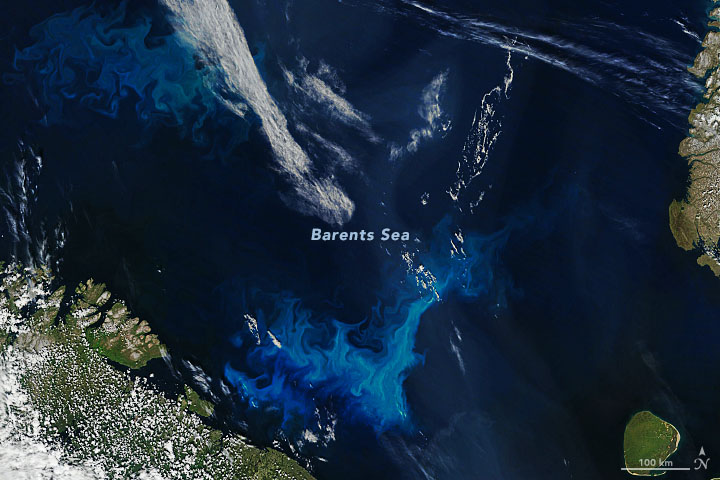NASA’s Terra and Aqua satellites captured the phytoplankton bloom of Arctic Barents Sea.

Phytoplankton have two significant roles, the producer of the food chain, and the CO2 adjuster. Phytoplankton produces oxygen and organic material from solar light and water, grows and then feeds zooplankton in the prey-predator system. Phytoplankton also contributes largely to the Earth on a planetary scale by absorbing CO2 and producing oxygen.
The Barents Sea is a marginal sea of the Arctic Ocean, located off the northern coasts of Norway and Russia and divided between Norwegian and Russian territorial waters. It was known earlier among Russians as the Northern Sea, Pomorsky Sea or Murman Sea (“Norse Sea”); the current name of the sea is after the historical Dutch navigator Willem Barentsz. The Barents Sea is a rather shallow shelf sea, with an average depth of 230m, and it is an important site for both fishing and hydrocarbon exploration.
The local scenery on the ground is as follows.

Reference: NASA Earth’s Tweet
See earthview photo gallery: LiVEARTH